Cornflower: As blue as the sea | Identifying flowers
Tasha's partner: Michelia
"The casual idealist
Planting flowers, raising dogs and traveling around the world. "

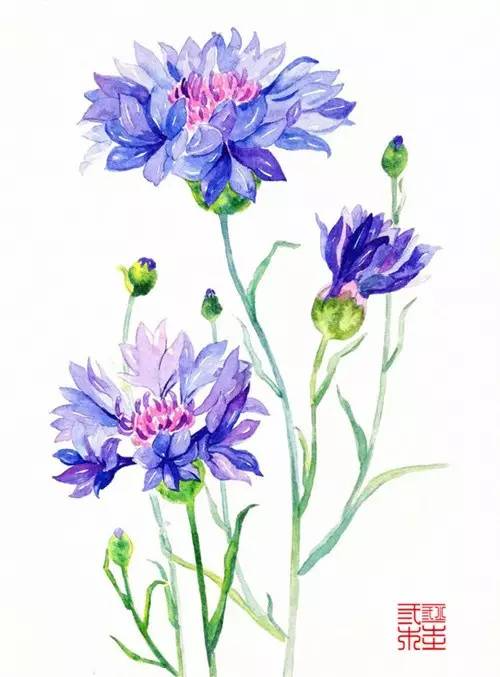
Cornflower is an annual or biennial herbaceous plant of the genus Centaurea in the Asteraceae family.
Don't be fooled by its tall, thin appearance. It has a great background. Its hometown is in Europe. It is currently regarded as the national flower of Germany. When you walk on the streets of Germany or play by the water, you will definitely see it. Many Germans plant it in front of and behind their houses to decorate their gardens. This shows how popular it is.
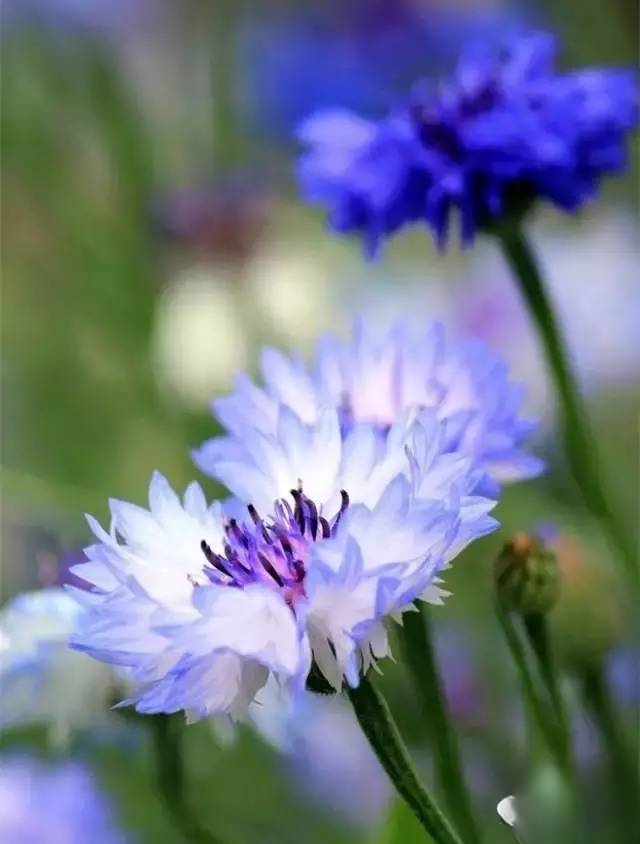
There is a legend widely spread among the German people. The great ancient hero Arminius was unfortunately infected with eye diseases during a campaign. One night, the god of war Ares came to Arminius in his dream and told him that the blue flowers blooming on the roadside in the morning could cure his eyes. The next day, Arminius really found the blue flowers on the roadside and crushed them to apply to his eyes. Soon, Arminius' eyes recovered and he returned triumphantly. So he called cornflower the "eye protector" and spread it widely.
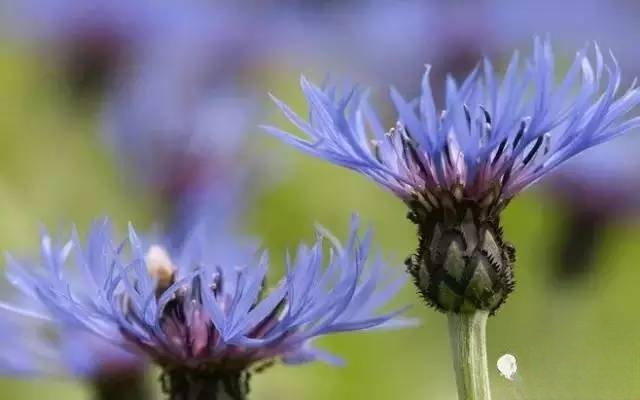
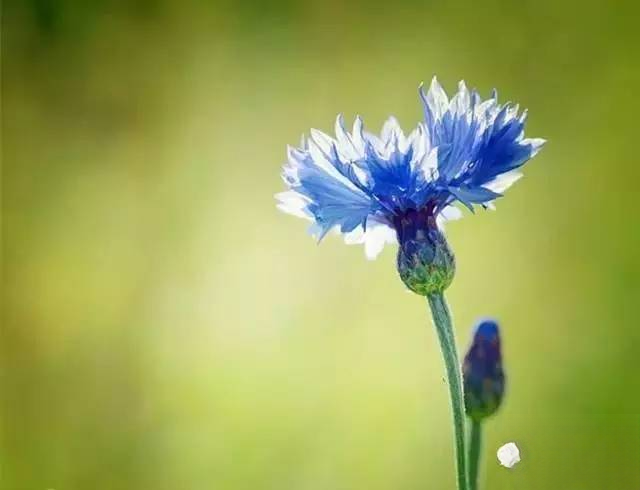
Cornflowers are not rare flowers. They were originally wild flowers. After years of cultivation, they became less "wild", and the flowers became larger and more colorful, including purple, blue, light red, and white. Purple and blue are the most precious. After all this, cornflowers have become the most beautiful flowers.
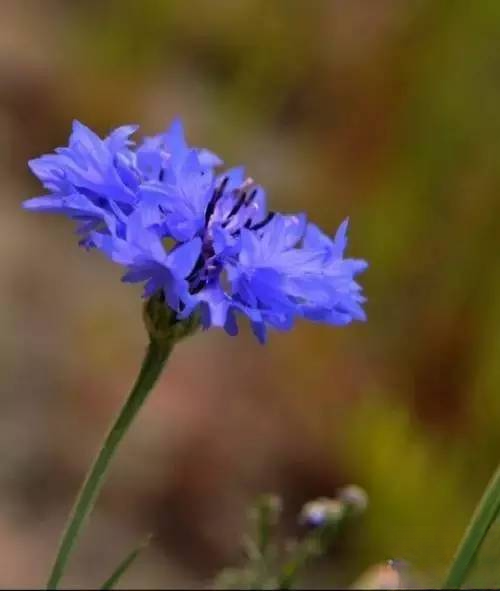
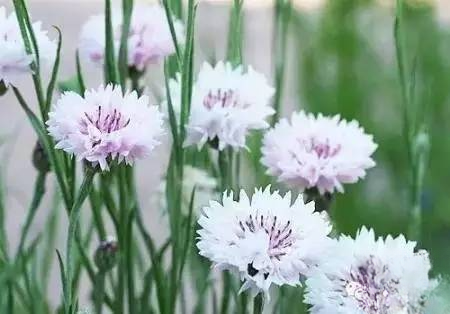
It is said that European girls like to flatten the cornflowers they picked and put them in their underwear. If the petals remain flat and wide after an hour, it means they will meet their future significant other. Therefore, the flower language of cornflowers is "encounter".
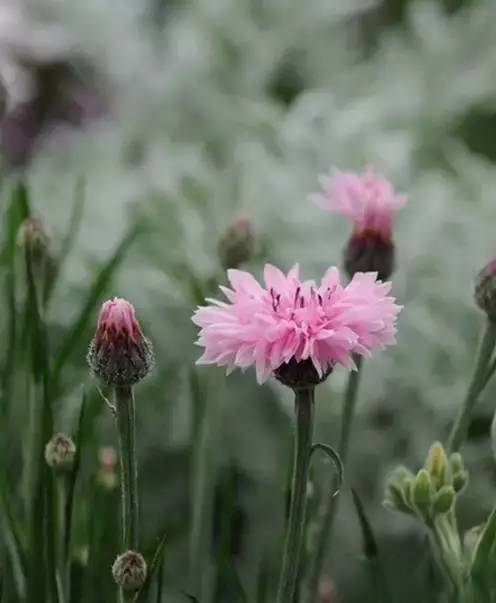
Stem: 30-70 cm or even higher, erect, branched from the middle, rarely unbranched. All stems and branches are grayish white, with thin spider-like curls.
Leaves: All stems and leaves are different colors or nearly different colors on both sides, green or gray-green on the upper side, covered with sparse spider silk hairs or depilated, and grayish white on the lower side, covered with thin pubescence.
Flowers: Flowers are blue, white, red or purple.
Fruit: The fruit is oval, with fine stripes and sparse white soft hairs. The flowering and fruiting period is from February to August.

Cornflowers are highly adaptable and prefer plenty of sunlight. They are not tolerant to humidity and are suitable for planting in places with plenty of sunlight and good drainage. Otherwise, they often die due to humidity. They are relatively cold-resistant and prefer coolness to heat. They prefer fertile, loose and well-drained sandy soil.

Sowing can be done in spring and autumn, but autumn is the best. Sow in the prepared seedbed in mid-to-late September, cover the soil until the seeds are not visible, compact it slightly, cover it with grass, water it sufficiently, keep the soil moist at all times, and remove the grass after germination. When the seedlings have 6-7 leaflets, they can be transplanted or planted, with a spacing of about 30 cm. After the seedlings survive, apply 5 times the amount of decomposed human feces and urine every 10 days or half a month, and stop fertilizing in March of the second year to wait for flowering.

Watering: In principle, watering once a day is sufficient, but in the drier summer, you can water once in the morning and once in the evening to keep the soil moist and lower the temperature of the potted plants, but avoid water accumulation.
Fertilization: Cornflowers like more fertilizers, and the three elements diluted solution should be applied once a month during the growth period. If the leaves are too lush, the proportion of nitrogen fertilizer should be reduced, and more phosphorus and potassium fertilizers should be applied before flowering to obtain larger and more beautiful flowers.
Management during flowering period: Cornflowers can naturally produce side branches. The more side branches, the smaller the flowers. If you want to get larger flowers, you can remove some side branches. Using plant lights to supplement lighting at night in winter can advance the flowering time.


Gardening appreciation:The pedicels of cornflowers are long, suitable for cut flowers and also for flower stems. Short plants can be used for flower beds, lawn borders or potted flowers. Tall varieties can be matched with other grass flowers to arrange flower beds and flower borders. They can also be planted in patches on the roadside or in the lawn. The plant shape is elegant and the flowers are beautiful, which is very natural.
Medicinal value: Cornflower hydrosol is a very mild natural skin cleanser. The floral water can be used to maintain hair and moisturize the skin; it can also help digestion and relieve rheumatic pain. It is a flower that is afraid of heat but not cold, so it is difficult to grow it well in Taiwan in summer, unless it is planted in a high and cold area.
Drinking value:Cornflower can be brewed alone or with green tea. Just brew it with boiling water. A cup of flower tea in the afternoon is a wonderful thing.



(Click on the picture to enter)
▼


